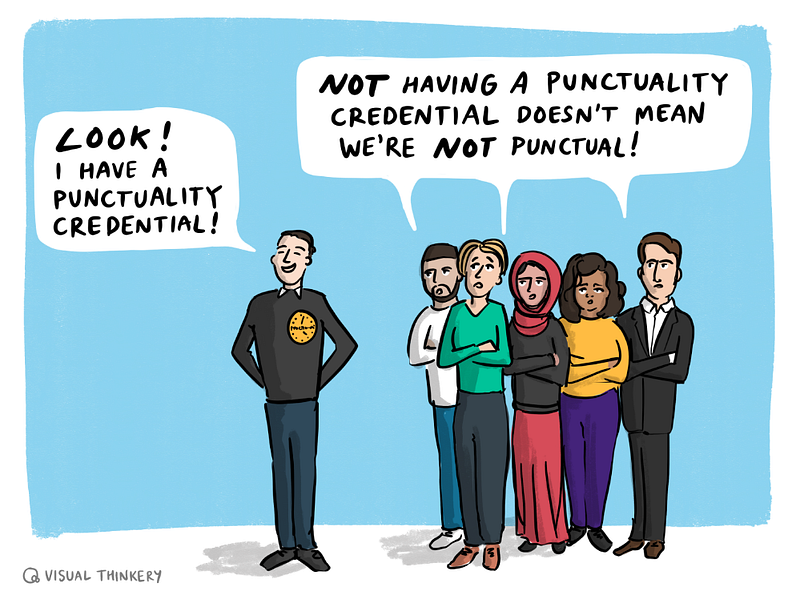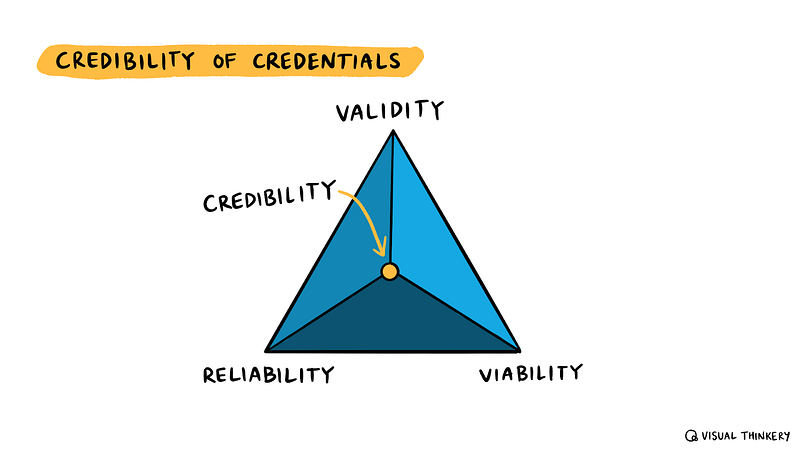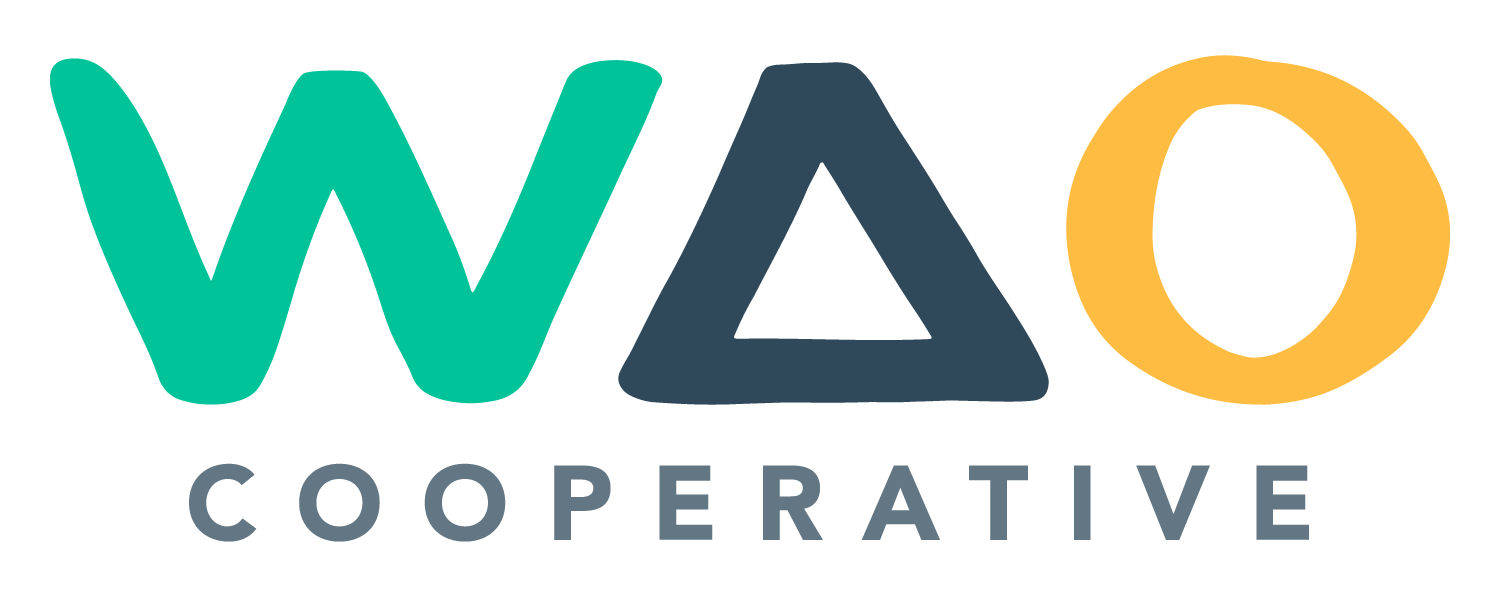
This is the sixth in a series of blog posts drawing on insights from a report authored by We Are Open Co-op (WAO) for the Irish National Digital Leadership Network (NDLN). The report explores the historical roots of credentialing, the emergence of microcredentials, and the opportunities they present for reshaping education and professional development.
While microcredentials present exciting opportunities, their implementation comes with challenges that require careful consideration. Issues such as equity, quality assurance, and unintended consequences must be addressed to ensure these systems benefit learners, organisations, and society as a whole. WAO uses the lens of Open Recognition to help address some of these challenges.
- Part 1 — Introduction and Context
- Part 2 — The Evolution of Credentialing
- Part 3 — Demystifying Microcredentials
- Part 4 — Trends Shaping the Future of Microcredentials
- Part 5 — The Role of Technology in Microcredentialing
- Part 6 — Challenges and Risks in Microcredentialing (this post)
- Part 7 — A Vision for the Future of Microcredentials
Equity and Accessibility
Microcredentials have the potential to widen participation in education, but they must be designed to include all learners. Organisations need to ensure their systems are accessible to users with diverse needs, including those with disabilities, limited digital literacies, or restricted access to technology.
Financial barriers also pose a challenge. For learners in marginalised communities, the cost of earning and using microcredentials could limit their accessibility. Subsidised or open-access credentialing models can help bridge this gap and make microcredentials a tool for inclusion rather than exclusivity. As can credentialing existing knowledge, skills, and behaviours, in accordance with Recognition of Prior Learning.
Quality Assurance and Trust
One of the most pressing challenges is ensuring that microcredentials maintain credibility and rigour. Open Badges provide a robust digital framework that ensures credentials can be verified and trusted, embedding metadata that describes the skills achieved, the criteria met, and the issuing organisation. This transparency builds trust among stakeholders, enabling credentials to be portable and interoperable across different platforms and contexts.

However, quality assurance ultimately rests with the issuing organisation. It is their responsibility to ensure that criteria for earning the credential are clear, the evidence supporting the achievement is credible, and the learning experience is both meaningful and relevant. Aligning credentials with recognised national or international standards further enhances their credibility and utility, ensuring they meet the expectations of both learners and employers.
Avoiding Vendor Lock-In
The reliance on proprietary platforms for issuing and managing microcredentials can create significant risks. As mentioned in a prior post, vendor lock-in limits portability and learner control, undermining the principles of openness and inclusivity.
Adopting open standards, such as Open Badges and Verifiable Credentials, ensures that microcredentials are interoperable across systems. This not only protects learners but also encourages innovation by encouraging collaboration between organisations and technology providers.
Data Privacy and Security
Microcredentialing systems rely on digital platforms to issue, store, and share credentials, making data privacy and security critical concerns. Protecting the personal information of learners is both a legal and ethical responsibility.
Open Badges v3 offers solutions by enabling credentials to be controlled directly by learners. Features such as selective sharing ensure that individuals can decide what information to share and with whom. However, care must be taken to avoid systems that lock learners into proprietary platforms, restricting the portability of their achievements.
Unintended Consequences
Microcredentials can create new opportunities for recognition, but poorly designed systems may have unintended effects:
- Overloading learners with excessive or narrowly focused credentials can lead to “credential fatigue,” where the value of individual achievements is diminished.
- Issuing credentials for specific skills or behaviours might inadvertently disadvantage those without them, regardless of their actual capabilities.
- Systems that favour those with more resources, digital literacy, or prior access to credentialing risk perpetuating inequalities rather than addressing them.
To avoid these pitfalls, microcredentialing systems should adopt Open Recognition principles, which aim to value diverse experiences and learning pathways. Recognising informal, community-based, and lived experiences alongside formal achievements can help ensure inclusivity.
Sector-Specific Challenges
Different sectors face unique challenges when adopting microcredentials:
- Charities — Struggle with limited resources to implement digital credentialing systems that are both accessible and effective.
- NGOs — Face difficulties in ensuring that microcredentials are inclusive for the communities they serve, particularly in low-resource environments.
- Co-ops — Need to balance member-driven governance models with the technical requirements of interoperable credentialing systems.
- Businesses — Risk prioritising microcredentials that align only with short-term goals, neglecting broader workforce development needs.
- Higher Education — Must address resistance from academic departments that may view microcredentials as a threat to traditional degree programmes.
Each of these sectors brings its own priorities and constraints to the table, but many of the challenges share common threads. Limited resources, resistance to change, and technical hurdles can all undermine the successful implementation of microcredentials if not carefully managed. Recognising these shared difficulties can help inform more effective, cross-sector strategies.
Practical Steps for Addressing Challenges
To overcome these challenges, organisations need to adopt thoughtful and inclusive approaches that address both technical and systemic barriers.
- Collaborate on shared frameworks that not only ensure technical validity but also assess the clarity of criteria, credibility of evidence, and relevance of learning experiences. These frameworks build trust across institutions and sectors, making microcredentials more valuable and credible.
- Use open standards like Open Badges and Verifiable Credentials to ensure that microcredentials are portable, secure, and learner-centred. These standards allow credentials to be recognised across platforms and contexts, giving learners more control over their achievements.
- Focus on recognising diverse forms of learning, including informal, community-based, and experiential achievements. This approach ensures inclusivity and acknowledges the broad spectrum of skills and contributions individuals bring.
- Continuously evaluate systems for equity and accessibility, addressing barriers such as financial constraints, digital literacy gaps, and platform design issues. By identifying and mitigating these challenges, organisations can expand participation and make microcredentials more inclusive.
Looking Ahead
Addressing these challenges requires thoughtful design, collaboration, and a commitment to inclusivity. By developing systems that prioritise accessibility, quality, and openness, organisations can harness the potential of microcredentials to empower learners and drive meaningful change.
In the final post of this series, we will explore a vision for the future of microcredentials, outlining actionable steps for organisations to integrate them into their strategies effectively.

Discussion